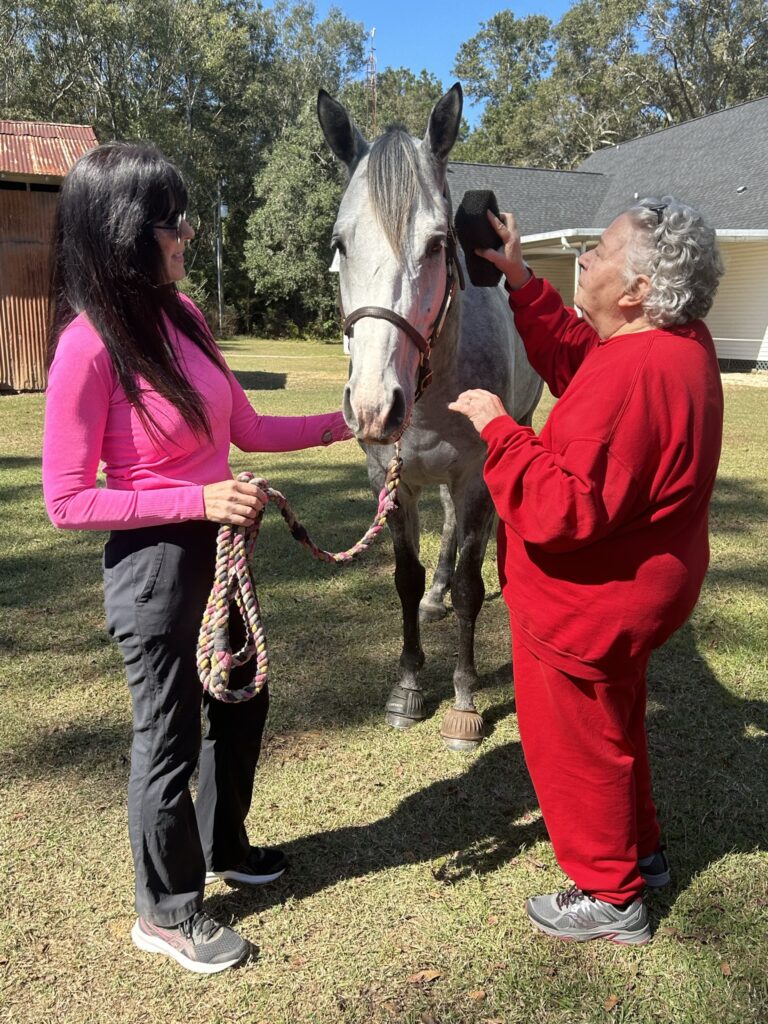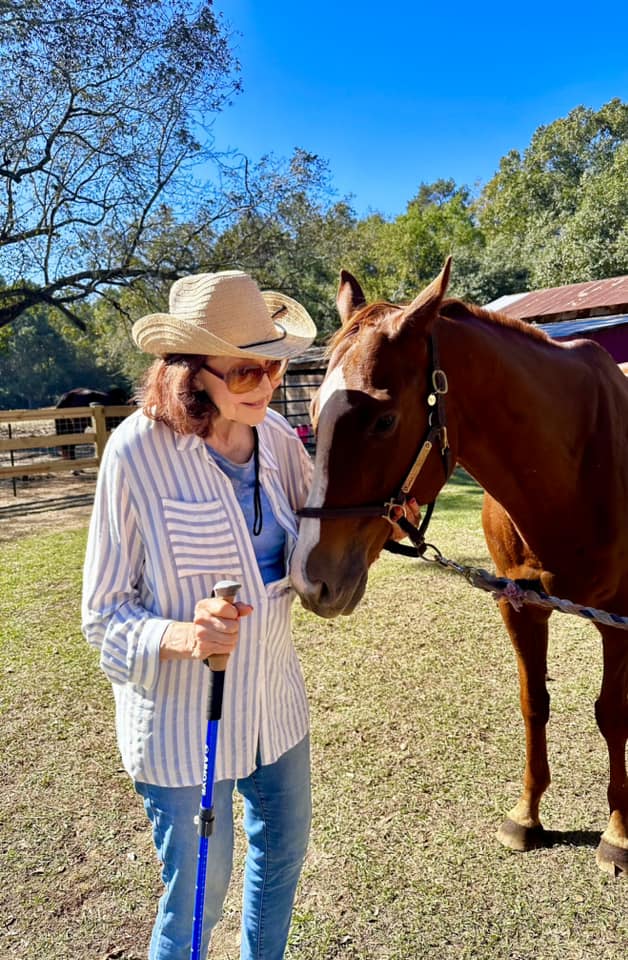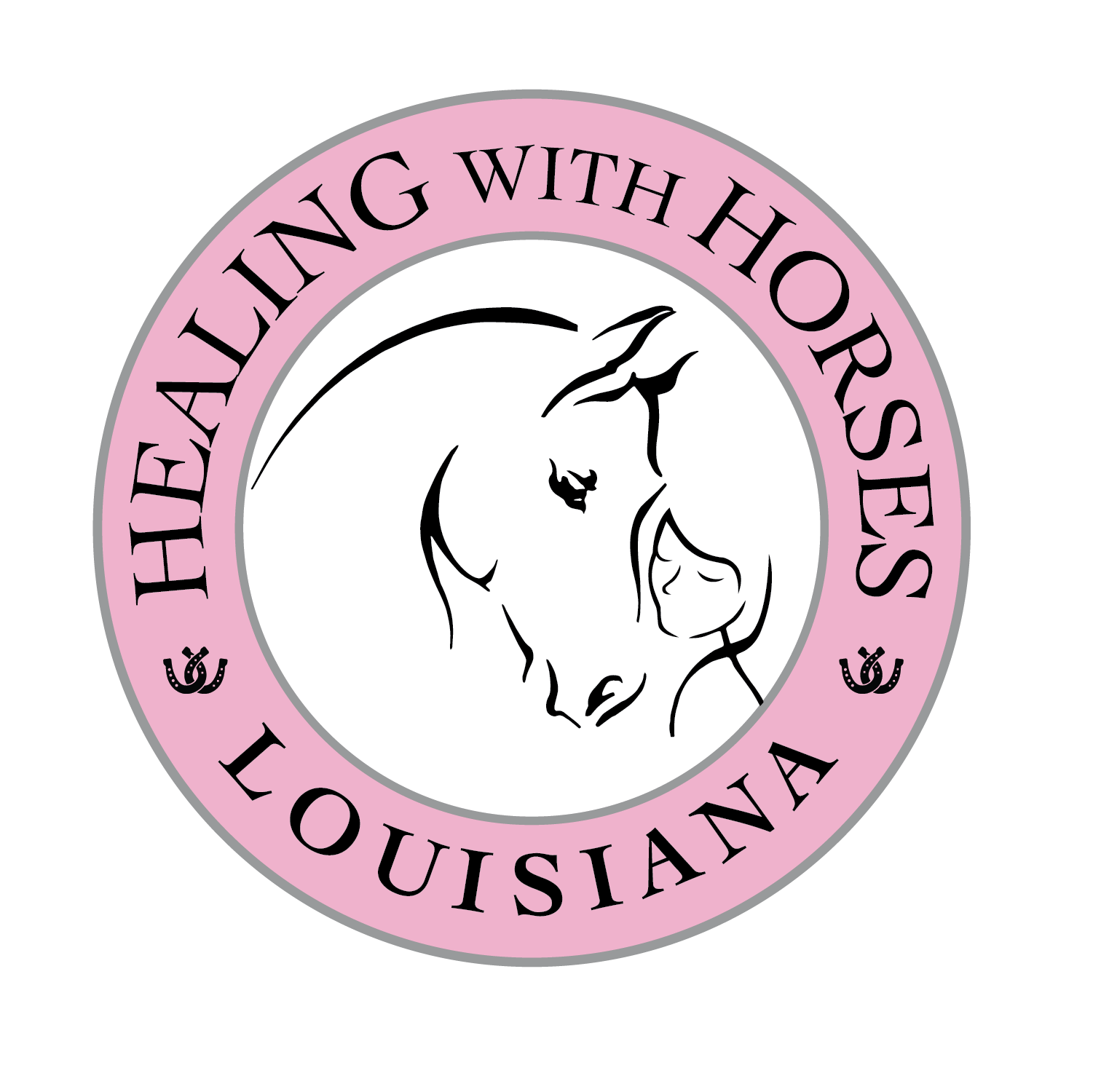Equine Touch & Sensory Therapy
What is Equine Touch and Sensory Therapy?
Our unique and enriched program of equine touch and sensory therapy was specifically designed by the founder, Kelly Cox Vicari, in order to create a healing connection between horse and human. This approach of connecting our human senses with that of a horse’s, is not only extremely healing to the client, but is also a beautiful opportunity for these incredible animals. Something genuinely, magical happens when the two come together.
Through our non-mounted, touch and sensory, therapy program, we incorporate the companionship of well trained, therapy horses with individuals, who are desiring a unique approach in therapeutic options, with a hands-on technique.
What truly sets us apart from other equine therapy programs is the fact that every session is uniquely designed specifically, for each individual. This allows specific issues and needs to be directly approached with specific details pertaining to the horse and individual as they spend their time together.
A Little History
Equine therapy, the use of horses in the treatment of health issues, dates back to the 1700’s when individuals and patients often cared for themselves through the simple act of being near animals. Since the 1960s, numbers of research studies have shown improvement in both, psychological and physical needs when animals are used as part of the therapy experience, as well as improvement with memory, trust building, anxiety, depression, addiction recovery, social anxiety, self-efficacy, interpersonal interactions, mood disorders and physiological changes in heart rate and cortisol levels.
“Touch comes before sight, before speech. It is the first language and the last, and it always tells the truth.”
Margaret Atwood

Examples of our specifically designed programs used in individual sessions may include:
But Why Horses?
For centuries horses have relied on their abilities to adapt to change, sense their environment and use the interdependence of the herd to thrive.
As prey animals, horses are keenly sensitive to their environment in order to ensure their safety. Horses do not think in language, but rather feel the energy within and around them, which makes them highly intuitive and emotionally attuned to the slightest gesture, body posture or tension, tone of voice, or glance. They have a heightened sensitivity to human emotion, which is what they are most attuned to when around us, including those emotions that are often out of our conscious awareness.
They respond to our behavior and feelings through their body language, which is clear and immediate; thus they can teach us how we impact those around us. Horses are considered living, breathing biofeedback machines. The connections between people and horses have proven to be therapeutic in many populations due to the nonjudgmental, unconditional interactions horses offer to humans.
When horses are working with clients, they are very docile and relaxed, which in itself is truly, amazing since humans are typically predators of horses. However, the horses are able to sense that the human has a need, such as depression, grief, social anxiety, physical disability, memory loss and numerous other difficulties.

What to Expect

